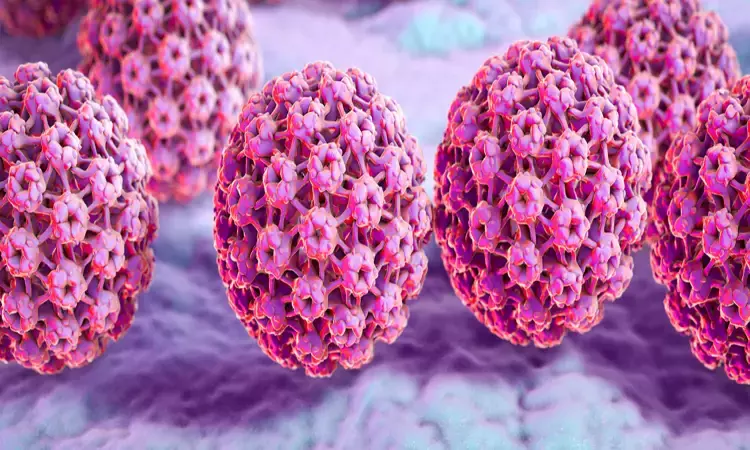- Home
- Medical news & Guidelines
- Anesthesiology
- Cardiology and CTVS
- Critical Care
- Dentistry
- Dermatology
- Diabetes and Endocrinology
- ENT
- Gastroenterology
- Medicine
- Nephrology
- Neurology
- Obstretics-Gynaecology
- Oncology
- Ophthalmology
- Orthopaedics
- Pediatrics-Neonatology
- Psychiatry
- Pulmonology
- Radiology
- Surgery
- Urology
- Laboratory Medicine
- Diet
- Nursing
- Paramedical
- Physiotherapy
- Health news
- Fact Check
- Bone Health Fact Check
- Brain Health Fact Check
- Cancer Related Fact Check
- Child Care Fact Check
- Dental and oral health fact check
- Diabetes and metabolic health fact check
- Diet and Nutrition Fact Check
- Eye and ENT Care Fact Check
- Fitness fact check
- Gut health fact check
- Heart health fact check
- Kidney health fact check
- Medical education fact check
- Men's health fact check
- Respiratory fact check
- Skin and hair care fact check
- Vaccine and Immunization fact check
- Women's health fact check
- AYUSH
- State News
- Andaman and Nicobar Islands
- Andhra Pradesh
- Arunachal Pradesh
- Assam
- Bihar
- Chandigarh
- Chattisgarh
- Dadra and Nagar Haveli
- Daman and Diu
- Delhi
- Goa
- Gujarat
- Haryana
- Himachal Pradesh
- Jammu & Kashmir
- Jharkhand
- Karnataka
- Kerala
- Ladakh
- Lakshadweep
- Madhya Pradesh
- Maharashtra
- Manipur
- Meghalaya
- Mizoram
- Nagaland
- Odisha
- Puducherry
- Punjab
- Rajasthan
- Sikkim
- Tamil Nadu
- Telangana
- Tripura
- Uttar Pradesh
- Uttrakhand
- West Bengal
- Medical Education
- Industry
Association of Plasma Circulating Tumor HPV DNA With HPV-Related Oropharynx Cancer: Study

Early detection of human papillomavirus (HPV)-related oropharyngeal squamous cell carcinoma (HPV-OPSCC) is currently limited owing in part to a lack of effective screening tools. Recent research suggests possible utility for circulating tumor HPV DNA (ctHPVDNA) in oral rinses and plasma. However, it is unclear whether plasma ctHPVDNA is detectable in a healthy population and if ctHPVDNA is concordant with other detectable HPV biomarkers including oral rinse and serum antibodies. Authors Sakshi R. Tewari and team aimed to understand whether ctHPVDNA is detectable in plasma of healthy participants at risk for oral HPV infection and the agreement with oral rinse and serum biomarkers.
This cross-sectional analysis included healthy people without HPV-OPSCC, but at increased risk of oral HPV infection. Participants were eligible if they reported 2 or more lifetime oral sex partners, history of anogenital dysplasia/ cancer, or were a partner of someone with an HPV-related cancer.
Participants were considered at risk for oral HPV based on being a man aged 30 years or older with 2 or more oral sex partners4 (85%), having a partner with HPV-OPSCC (7%), having a partner with history of anogenital cancer or dysplasia (2%), or themselves having a history of anogenital cancer or dysplasia (6%).
Oncogenic ctHPVDNA was undetectable in plasma of all 408 participants. Although 20 participants had oncogenic oral ctHPVDNA and 43 were E6 seropositive to an oncogenic type, none of these people had ctHPVDNA detected in their plasma. Paired comparisons of ctHPVDNA in plasma and oral rinse, as well as plasma ctHPVDNA and serum E6 antibodies yielded a κ statistic of 0. This implies agreement of biomarkers was no better than chance alone. In addition, oral ctHPVDNA and E6 antibodies had poor agreement (κ = 0.03), only 3 people had positive results for both.
A good biomarker for a malignant disease should not be detectable in individuals without the disease, a characteristic that makes it specific. Previous specificity estimates for ctHPVDNA in plasma of patients with HPV-OPSCC were discrepant and derived from small groups of controls. This analysis focused on healthy participants enrolled based on eligibility criteria that have been shown to classify them as high-risk for oral HPV infection.
In a large cohort of healthy people without cancer, plasma ctHPVDNA had 100% specificity. This analysis provides clarity for whether detectable ctHPVDNA is present in the plasma of healthy controls without cancer, with or at risk for oral HPV. Moreover, it supports ctHPVDNA in plasma as a potential biomarker in screening or surveillance given better specificity compared with other vali dated OPSCC biomarkers (oral ctHPVDNA and E6 antibodies).
Detection of plasma ctHPVDNA among HPV-OPSCC, including those with localized disease, suggests high positive predictive value, but how long before HPV-OPSCC plasma ctHPVDNA is detectable is unknown and will inform potential screening benefit.
Source: Sakshi R. Tewari, MHS Gypsyamber D'Souza, PhD Tanya Troy, MPH; JAMA Otolaryngology–Head & Neck Surgery doi:10.1001/jamaoto.2022.0159
Dr Ishan Kataria has done his MBBS from Medical College Bijapur and MS in Ophthalmology from Dr Vasant Rao Pawar Medical College, Nasik. Post completing MD, he pursuid Anterior Segment Fellowship from Sankara Eye Hospital and worked as a competent phaco and anterior segment consultant surgeon in a trust hospital in Bathinda for 2 years.He is currently pursuing Fellowship in Vitreo-Retina at Dr Sohan Singh Eye hospital Amritsar and is actively involved in various research activities under the guidance of the faculty.
Dr Kamal Kant Kohli-MBBS, DTCD- a chest specialist with more than 30 years of practice and a flair for writing clinical articles, Dr Kamal Kant Kohli joined Medical Dialogues as a Chief Editor of Medical News. Besides writing articles, as an editor, he proofreads and verifies all the medical content published on Medical Dialogues including those coming from journals, studies,medical conferences,guidelines etc. Email: drkohli@medicaldialogues.in. Contact no. 011-43720751


